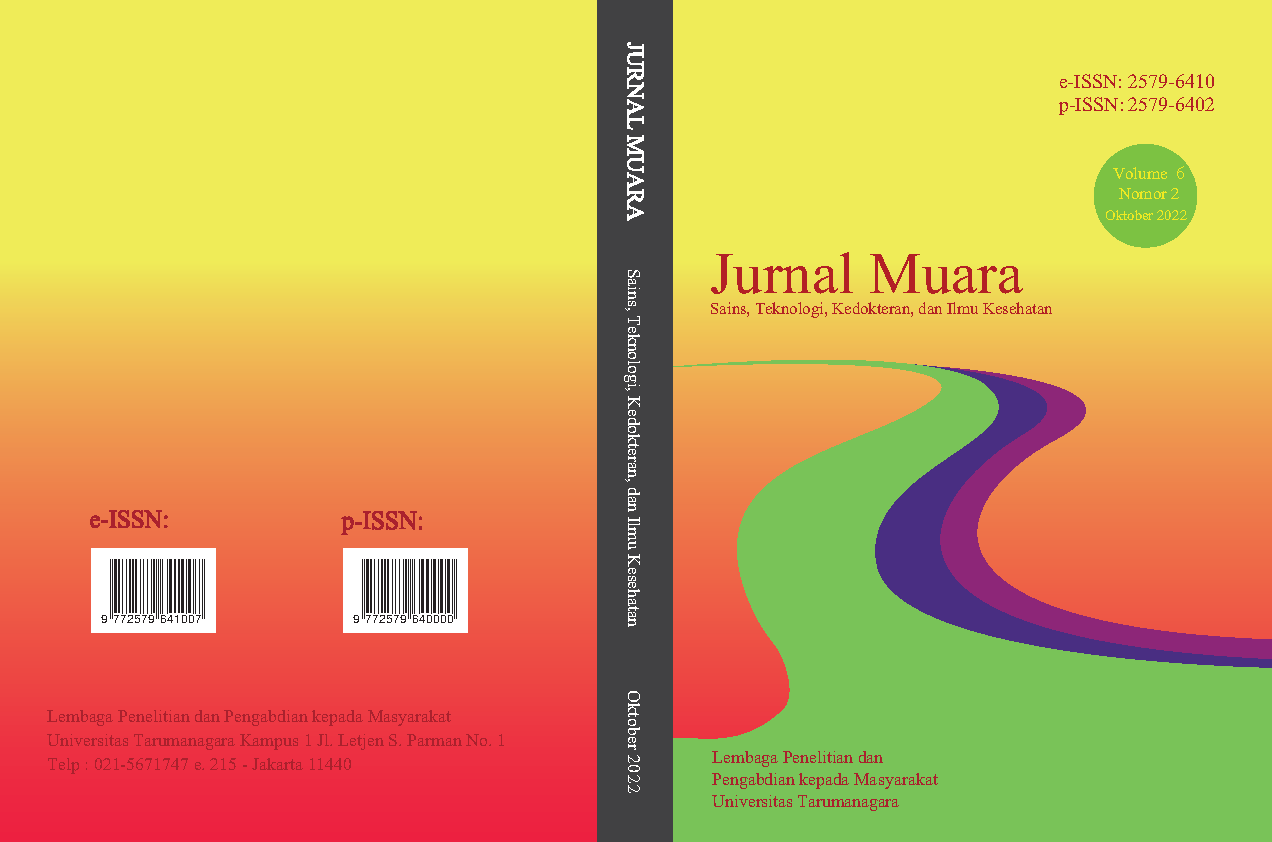ANALISIS KEKUATAN TARIK SAMBUNGAN PLAT ALUMINIUM AA 5083 PADA PADA PROSES SPOT WELDING
Main Article Content
Abstract
Spot welding is a method of electrical resistance welding in which two or more metal sheets are clamped between two electrodes and at the same time an electric current is applied so that the surface of the material reaches the welding temperature and then the material is fused. The purpose of the study was to determine the tensile strength of the 5083 aluminum plate connection in the spot welding process. This research was carried out experimentally as for the plate material that is connected is aluminum AA 5083 which has a thickness of 1 mm. Before welding is carried out, it is necessary to determine the variation of parameters, namely the welding current of 1.75 volts, 2.20 volts, 2.28 volts and the welding time for 1 second, 1.5 seconds, and 2 seconds. The spot welding process is carried out by varying these parameters, with the shape of the connection that occurs is overlapping. After the splicing process, then the specimen is tested for connection strength through a tensile. From the results of the study, it was obtained that the greater the electric current used, the greater the electric power used and it can be seen that the longer the welding time, the greater the electric power used.
Keywords: Spot welding, tensile strength, AA 5083. aluminum
Abstrak
Las titik (spot welding) merupakan salah satu cara pengelasan resistansi listrik di mana dua atau lebih lembaran logam di jepit di antara dua elektroda dan pada saat yang bersamaan arus listrik di alirkan sehingga permukaan material mencapai temperatur pengelasan kemudian material bersatu. Penelitian di laksanakan bertujuan untuk mengetahui kekuatan tarik sambungan plat alumunium 5083 pada proses spot welding. Penelitian di lakukan secara eksperimen, adapun bahan plat yang di sambung adalah aluminium AA 5083 yang memiliki ketebalan 1 mm. Sebelum pengelasan di lakukan, maka di tentukan terlebih dahulu variasi parameter yaitu arus pengelasan yang terdiri dari 1,75 V, 2,20 V, 2,28 V dan waktu pengelasan selama 1 s, 1,5 s, 2 s. Proses spot welding di lakukan memvariasikan parameter tersebut, dengan bentuk sambungan adalah tumpang tindih. setelah proses penyambungan, kemudian spesimen di lakukan pengujian kekuatan sambungan melalui uji tarik.Hasil penelitian di peroleh bahwa jika tegangan arus listrik semakin besar di gunakan, maka semakin besar daya listriknya, dan semakin lama waktu pengelasan maka daya listrik yang di gunakan semakin besar.
Article Details

This work is licensed under a Creative Commons Attribution-NonCommercial-ShareAlike 4.0 International License.
This work is licensed under a Jurnal Muara Sains, Teknologi, Kedokteran dan Ilmu Kesehatan Creative Commons Attribution-ShareAlike 4.0 International License.
Authors transfer copyright or assign exclusive rights to the publisher (including commercial rights)
References
Achmad, H. (2001). Kimia Unsur dan Radio Kimia, Bandung: PT. Citra Aditya Bakti.
Batista, M., & Brandi, S. D. (2013). Use of dynamic resistance and dynamic energy to compare two resistance spot welding equipment’s for automotive industry in zinc coated and uncoated sheets. American Journal of Engineering Research, 2(6), 79-93.
Beumer.B.J (1994). Ilmu Bahan Logam, Jilid II, cetakan Ke-2, Jakarta: PT. Bhratara.
Habibi, M. L., & Ilman, M. N. (2015). Studi Metode Static Termal Tensioning (Stt) Untuk Meminimalkan Distorsi Las Mig Aluminium Aa5083 Dan Pengaruhnya Terhadap Sifat Mekanis. ReTII.
Lubis, S. M., & Erlely, S. (2020, December). Analysis of Welding Strength S45C Material in Spot Welding Process with Variations in Welding Press Time and Electrode Diameter. In IOP Conference Series: Materials Science and Engineering (Vol. 1007, No. 1, p. 012061). IOP Publishing.
Mandall.N.R (2005). Aluminium welding. Narosa Publishing House: Kharagpur India
Purwaningrum, Y., Triyono, T., Koharto, K., & Suhartanto, A. (2014). Pengembangan Metode Stressed Sheeting Weld Pada Pengelasan Plat Berpenguat Dengan Variasi Temperatur Preheat. Teknoin, 20(1).
Rahmi, M., Canra, D., Jaelane, B. L., & Fatkhurrohman, N. M. (2019, August). Analisis Pengaruh Spot Welding pada Material AA1100 dan Zr705 Alloy dengan Metode FEA. In Prosiding Industrial Research Workshop and National Seminar (Vol. 10, No. 1, pp. 576-580).
Rao, H. M., Kang, J., Shi, L., Sigler, D. R., & Carlson, B. E. (2018). Effect of specimen configuration on fatigue properties of dissimilar aluminum to steel resistance spot welds. International Journal of Fatigue, 116, 13-21.
Reddy, A. C. (2017). Evaluation of parametric significance in friction welding process of AA1100 and Zr705 alloy using finite element analysis. Materials Today: Proceedings, 4(2), 2624-2631.
Setiawan, A., & Wardana, Y. A. Y. (2006). Analisa Ketangguhan dan Struktur Mikro pada Daerah Las dan HAZ Hasil Pengelasan Sumerged Arc Welding pada Baja SM 490. Jurnal teknik mesin, 8(2), 57-63.
Surdia, T., & Saito, S. (2000). Pengetahuan bahan teknik.
Vlack, L. H. V. (2001). Elemen-elemen ilmu dan rekayasa material.
Wiryosumarto, H. Toshie. (2004). Teknologi Pengelasan Logam.
Xu, Z., Li, Z., Ji, S., & Zhang, L. (2018). Refill friction stir spot welding of 5083-O aluminum alloy. Journal of Materials Science & Technology, 34(5), 878-885.



